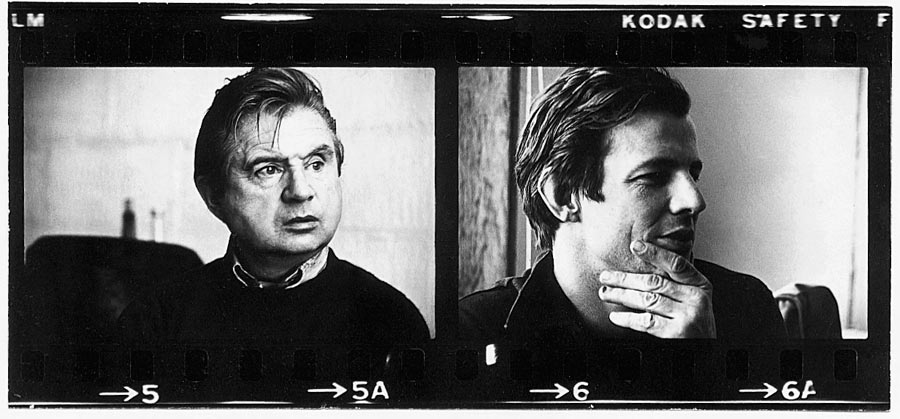
An exciting new exhibition dedicated to the work of Peter Beard is online at Ordovas in London.
Wild Life: Francis Bacon and Peter Beard explores the friendship between Francis Bacon (1909–1992) and Peter Beard, his long-time friend and muse. Despite working on different sides of the world, the two artists shared deeply similar personal and creative passions. Intended as a celebration of Beard’s life, the exhibition features works from the period of the two artists’ friendship shown side by side for the first time, along with unseen materials from Beard’s archives including letters and photographs gifted to Bacon, and, most importantly, Beard’s diaries, which served as the genesis for his art.
Francis Bacon and Peter Beard first met in 1967. Beard recalled, ‘I was at one of his openings at the Marlborough Gallery in London where he was standing in some kind of reception line and I simply said, “Hi — Peter Beard.” He said, “I know who you are.” It was my very great luck that he had just bought The End of the Game and connected with the doomed pachyderms.‘ The two became close friends and admirers of each other’s work and served as one another’s subjects on many occasions over the years.
Francis Bacon liked to paint portraits of his sitters from photographs, and he was particularly drawn to sitters with good bone structure; happily, Peter Beard was able to provide both. Bacon painted nine major portraits of Beard and myriad others inspired by his face. From time to time, Beard sent Bacon photographs of himself to work from and to add to what Beard called Bacon’s ‘compost’ (the thousands of images piled on Bacon’s studio floor). The source image for Two Studies for Portrait, painted by Bacon in 1976 and on display for the first time since 1977, is thought to have been one such gift from Beard to Bacon. The two seemingly sequential images of Beard’s chiselled features illuminated against a stark black backdrop are reminiscent of a contact sheet, similar to those incorporated in many of Beard’s own works. Painted in Paris, the portraits mark a moment in which Bacon began to increasingly merge his own features with those of his sitters, in some cases going so far as to label paintings of Beard as ‘self-portraits.’ In Bacon’s portraits of Beard we begin to see the artist emerge from a period of mourning following the 1971 death of his lover, George Dyer, and once again embrace the joy of painting as he attempts to capture his friend’s true image, or his ’emanation’ as Bacon called it.
Bacon and Beard corresponded regularly, and often spoke of their shared views on the bestial nature of man. Indeed, it was conversations between the two artists that fueled Beard’s desire to fully document the effects of human intervention on the African elephant population. The exhibition includes correspondence between the two artists, as well as other archival materials, including a selection of Beard’s diaries, which will be publicly displayed for the first time.
In 1977, The End of the Game was updated and republished to include contributions from leading scientists of the day, and Beard’s images from the new edition were exhibited at the International Center of Photography (ICP) in New York to great critical acclaim. A number of important rare works that have not been seen since the ICP exhibition will be on display, highlighting the two artists’ shared concerns about conservation. Upon Bacon’s death in 1992, many hundreds of Peter Beard’s images were found in the former’s ‘compost.’ These included Beard’s celebrated series of aerial photographs of dead elephant carcasses that formed the basis of the last chapter of the 1977 edition of The End of the Game, which had Bacon’s input. Bacon instinctively recognized the important of Peter Beard’s visceral documentation and artworks, along with his nuanced and sensitive understanding of the modern condition in relation to the animal self, and his efforts to raise awareness of the devastating effects of human intervention on wildlife, and his unique and powerful artistic vision, will continue to inspire and stimulate generations to come.
The exhibition is open from 12 April until 16 July 2021. ‘Wild Life‘ is also online with a presentation of unpublished companion materials. The accompanying catalogue includes essay contributions by Martin Harrison and Sophie Pretorius.